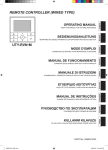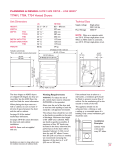Download Mini-box.com.au pdf picoLCD 256x64 SideShow
Transcript
picoLCD 256x64
SideShow
from Mini-Box.com
- USER MANUAL Revision 1.0
picoLCD 256X64 USB LCD User Manual by Mini-Box.com
CONTENTS
1. Hardware installation......................4
2. Windows Vista driver installation. .6
3. Linux driver installation...............10
3.1.
3.2.
3.3.
3.4.
Driver installation and default programs.........................................................10
Customizing your picoLCD display with plugins and widgets ......................15
Customizing your picoLCD display with external python scripts..................16
Controlling the display with the keypad keys.................................................17
4. Appendixes...................................18
4.1.
4.2.
4.3.
4.4.
Appendix A Sample MRTG file for Linux MRTG display plugin................18
Appendix B Sample lcd4linux.conf file for Linux picoLCD software .........19
Appendix C Sample python script for Linux picoLCD .................................21
Appendix D Key and values mapping for Linux software..............................21
© 2009 Rev 1.0
2
Welcome!
Thank you for purchasing the picoLCD 256x64 from mini-box.com !
Before you start installing the picoLCD 256x64,
take note of the following precautions:
•
•
•
•
Unplug the power cord from the wall socket
before installing the picoLCD256x64.
Hold the picoLCD by the edges to avoid
touching the display or the integrated circuits
on it.
Before you install or remove any component,
ensure that the ATX power supply is switched
off or the power cord is detached from the
power supply.
Failure to do so may cause severe damage to
the components, peripherals or mainboard.
1. Hardware installation
Depending on the picoLCD 256x64 package that you purchase, picoLCD 256x64
comes with either an external or internal USB connector cable.
Locate the USB header (J4) onto the back of the PicoLCD 256x64, see the picture
below:
Keyboard extension header
ICSP
Connector
Keypad
connector
IR Receiver
connector
USB
Header
Extra I/O
1
J1: Keypad connector
J2: Keyboard and keyboard
extension header connector
Pin
Pin
Pin
Pin
Pin
Pin
Pin
Pin
Pin
1
2
3
4
5
6
7
8
9
–
–
–
–
–
–
–
–
–
Column 1
Column 2
Column 3
Column 4
Row 4
Row 3
Row 2
Key (not connected)
Row 1
J5: IR Receiver
Pin
Pin
Pin
Pin
Pin
1 – GND
2– GND
3 – VCC (5V)
4 – Key (not connected)
5 – IR Signal
J3: Extra I/O
J6: ICSP connector
Pin
Pin
Pin
Pin
Pin
Pin
Pin
Pin
Pin
Pin
Pin
Pin
Pin
Pin
1
2
3
4
5
6
7
8
9
–
–
–
–
–
–
–
–
–
RB0
RB1
RC1
RC6
RC7
RA0
RA1
Key (not connected)
RA2
J4: USB connector
Pin 1 – USB V+
Pin 2 – USB DPin
3 – USB D+
Pin 4 – USB GND
Pin 5 – Shield (USB GND)
1
2
3
4
5
–
–
–
–
–
MCLR
VCC (5V)
GND
Data
Clock
Please see below the situations that you might encounter:
A) The picture below represents a motherboard. Please check the your motherboard’s
manual and locate a free USB header, like in the picture below:
USB HEADER
The connection between the picoLCD256x64 and the
motherboard will be done using a USB 5 pin to 5 pin cable.
http://www.mini-box.com/USB-5-pin-to-5-pin-cable
B) Insert the USB cable into a free USB port from your computer.
http://www.mini-box.com/CAB-USB-5pin-typeA
2. Windows Vista driver installation
Windows Vista will automatically detect your device and install the HID drivers.
Download the Windows Vista driver from our webpage at:
http://www.picolcd.com/drivers/
Run PicoLCD256x64_1.0.0.4.exe
In case that you have forgotten to plug in the USB cable,
an error message will occur, like in the picture below.
If the PicoLCD is plugged into an USB slot,
the driver installation will begin.
Wait until the setup will install the device driver.
Windows Vista will verify the publisher of the driver software.
Accept and install it.
Wait until the setup will install the device driver.
Now you have successfully installed the drivers for the PicoLCD
256x64. Press OK.
Access the Control Panel and open Windows SideShow.
This will let you to configure your Windows SideShow settings.
By default, Windows Vista will display one gadget. If you want more
gadgets, please click “Get more gadgets online”
For example select “Windows Media Player” gadget and on your
picoLCD256X64 it will show what the status of your Windows Media
Player program, like in the pictures below:
Picture showing Sideshow menu chooser:
More Sideshow gadgets: http://gallery.live.com/default.aspx?pl=7
3. Linux driver installation
3.1. Driver installation and default programs
The picoLCD 256x64 driver si based on lcd4linux which is available at
http://ssl.bulix.org/projects/lcd4linux/ . The driver has been integrated in lcd4linux
sources and it's also available on the above location.
Mini-Box.com offers an easy graphical interface for installing the picoLCD 256x64
drivers. The steps presented below are for a GNOME based user interface but should
be similar for KDE users. The installer and drivers wore tested in various distributions
including Ubuntu, Fedora and Gentoo.
The software requirements are:
• An up to date linux distribution. The older version that we tested is Fedora
Core 8 and Ubuntu 8.04.
• A working usb kernel drivers stack.
• At least python 2.5 for user scripts.
First step is to download the latest drivers from http://www.picolcd.com/drivers
After the download has finished you will need to execute the installer, on some
distributions the files downloaded from internet don't have the execute permision
allowed so you will need to give the execute permision either right-clicking on the
installer icon on your desktop (or where you saved the installer) or by issuing a:
chmod +x picoLCD-256x64-Linux-Installer
command from a terminal.
The steps to enable the execution of the installer from a graphical interface is
presented below:
Right click on the installer icon from your download location (we used Desktop) and
choose Properties, like in the picture below:
This window will appear:
Now click on the Permissions tab and select the option:
Allow executing file as program and then click the button Close
After doing that, double click on the installer icon.
A welcome screen will be presented press the Next button to begin the installation
It's advisable to leave picoLCD drivers to be installed in default location (your user
folder) but you can change the default location by clicking the Browse button and
selecting a new folder.
After you choose a install location press Next button to start copying files.
After the installation is completed you can close the installer by pressing the Finish
button. The installer automatically creates start menu entries for picoLCD program
and it’s default applications:
Clicking on one of the menu entries will
present a new window which will require
you to enter the administration password.
This is needed because the picoLCD driver
needs a higher level access so it can detach
from kernel HID driver to function correctly.
By default there are 3 examples installed the first one it's a overview of your system
internals like memory and cpu utilisation, free hard-drive space, network bandwidth
in use, hard-drive io in use, date, uptime and system information.
The program will continue to monitor your system on background and report the
information on the LCD.
The picoLCD MRTG monitors allows MRTG graphs to be rendered on the picoLCD
display. To change the location of the MRTG server you will need to edit
lcd4linux.conf.mrtg from /home/minibox/picolcd-256x64/picoLCDGraphic/Configs/
with a text editor and change the lines:
currentImage 'http://192.168.12.113/mrtg/127.0.0.1_2-month.png'
mrtgDayImageURL 'http://192.168.12.113/mrtg/127.0.0.1_2-day.png'
mrtgWeekImageURL 'http://192.168.12.113/mrtg/127.0.0.1_2-week.png'
To point to your MRTG server image URLs. You can use the arrows buttons on the
LCD to change the current displayed image. A sample MRTG config file is presented
in Appendix A.
The picoLCD RSS Viewer allows different RSS feeds to be dowloaded and displayed
on the LCD. By default there are 3 feeds installed you can change these feeds by
editing lcd4linux.conf.rss from /home/minibox/picolcd256x64/picoLCDGraphic/Configs/ and change the lines:
rss1
rss2
rss3
'http://slashdot.org/slashdot.rdf'
'http://www.engadget.com/rss.xml'
'http://www.linuxsecurity.com/static-content/debian.rss'
To point to your desired RSS feeds. You can use the Home and Back button to change
between the feeds and arrows buttons to scroll the feed news up and down.
3.2. Customizing your picoLCD display with plugins and
widgets
The easiest way to customize the information displayed by the picoLCD is to edit the
lcd4linux.conf file located in installation folder picoLCDGraphic/Configs and add
other widgets/plugins, create different behaviors and display data as you see fit. A
sample lcd4linux.conf file is available on Appendix B.
Available plugins are:
•
•
•
•
•
•
•
•
•
•
•
•
•
•
•
•
•
Asterisk plugin
Config plugin
/proc/cpuinfo plugin
/proc/diskstats plugin
DVB plugin
exec (external command) plugin
FIFO plugin
file reading plugin
GPS (NMEA) plugin
hddtemp (hard disk temperature)
I2C sensors plugin
iconv (charset converter) plugin
ISDN Monitor (imon) plugin
ISDN plugin
KVV plugin
/proc/loadavg plugin
mathematical functions plugin
•
•
•
•
•
•
•
•
•
•
•
•
•
•
•
•
•
•
•
/proc/meminfo plugin
MPd plugin
MySQL plugin
/proc/net/dev plugin
netinfo plugin
POP plugin
PPP plugin
/proc/stat plugin
Python plugin
Example plugin
SETI plugin
statfs plugin
string functions plugin
APM plugin
Time plugin
uname plugin
uptime plugin
WLAN plugin
XMMS plugin
Available widgets are:
•
•
•
•
•
•
•
Bar Widget
Icon Widget
Image Widget
Timer Widget
GPO Widget (General Purpose Inputs and Outputs)
Keypad Widget
Text Widget
More information on working with widgets, plugins can be found on
lcd4linux page at:
http://ssl.bulix.org/projects/lcd4linux/wiki/Plugins
http://ssl.bulix.org/projects/lcd4linux/wiki/Layout
http://ssl.bulix.org/projects/lcd4linux/wiki/Evaluator
3.3. Customizing your picoLCD display with external python
scripts
Another powerful features is customization through user made scripts. The
scripts are written in python which is bundled with most linux distributions. Both
MRTG and RSS programs are written in python. A sample python script to fetch
MRTG images is presented in Appendix C. Python scripts can be added to the display
by creating a new widget and display it on a LCD Row as in the example below.
Widget MRTGMinute {
class 'Text'
expression currentFile=python::exec('mrtg', 'saveimage', currentImage)
width 42
update 100
}
Layout picoLCD {
Row1 {
Col1 'MRTGMinute'
}
}
The python::exec plugin will load the mrtg.py script and call the saveimage
function from the script with the currentImage as paramater. The variable
currentImage is a lcd4linux variable defined in the lcd4linux.conf
The python::exec plugin will look for your scripts in default python search paths and
in PYTHONPATH environment variable that can be set by user. By default picoLCD
256x64 programs export PYTHONPATH to your installation folder in
picoLCDGraphic/Scripts. You can add your own scripts in that location or modify the
existing scripts to suit your needs.
3.4. Controlling the display with the keypad keys
To make use of the picoLCD keys you first need to define a timer which will
read the picoLCD keys at an interval and set a variable to hold the current pressed
key:
Variables {
n 0
#the key value taken from picoLCD gpi
nkey 0
#current pressed key
}
# A simple timer to get the key values
Widget TimerW {
class 'Timer'
expression n=LCD::GPI(1);nkey=n!=0?n:nkey
active 1
update 100
}
This will read key pressed every 100ms and store the key values in nkey
variable. A table for current key / values mapping is pressented in Appendix
D.
You will also need to define a widget that does an action when a given key is
pressed:
#The keypad up key will display text “Arrow Up”
Widget GPO_kup {
class 'GPO'
expression nkey==5?'Arrow Up':'Other key';nkey==5?1:0
update 300
}
The last thing you need to do is to declare the key widgets and the timer defined
above in the picoLCD layout section:
Layout picoLCD {
Row1 {
Col1 'GPO_kup'
}
Timer1 'TimerW'
GPO1
'GPO_kup'
}
4. Appendixes
4.1. Appendix A Sample MRTG file for Linux MRTG display
plugin
EnableIPv6: no
WorkDir: /var/www/mrtg
XSize[127.0.0.1_2]: 155
YSize[127.0.0.1_2]: 30
Options[127.0.0.1_2]: noborder, nobanner, nolegend, integer
#kMG[127.0.0.1_2]:,,M
YLegend[127.0.0.1_2]: Bytes/s
Target[127.0.0.1_2]: 2:[email protected]:
SetEnv[127.0.0.1_2]: MRTG_INT_IP="192.168.12.113" MRTG_INT_DESCR="eth0"
MaxBytes[127.0.0.1_2]: 12500000
Title[127.0.0.1_2]: Traffic Analysis for picolcd.mini-box.com
PageTop[127.0.0.1_2]: <h1>Traffic Analysis for picolcd.mini-box.com</h1>
<div id="sysdetails">
<table>
<tr>
<td>System:</td>
<td>picolcd.mini-box.com</td>
</tr>
</table>
</div>
4.2. Appendix B Sample lcd4linux.conf file for Linux
picoLCD software
# The display settings
Display picoLCD {
Driver
'picoLCDGraphic'
Size
'256x64'
Contrast
230
Backlight 1
Inverted
Icons
1
1
}
#Variables needed for script to function
Variables {
n 0
#the key value taken from picoLCD gpi
nkey 0
#current pressed key
# the current URL that will be passed to python script
currentImage 'http://192.168.12.113/mrtg/127.0.0.1_2-month.png'
# currentImage will change it's value when arrows keys are pressed
mrtgDayImageURL 'http://192.168.12.113/mrtg/127.0.0.1_2-day.png'
mrtgWeekImageURL 'http://192.168.12.113/mrtg/127.0.0.1_2-week.png'
#currentFile variable holds the location of the saved image by the pyhon script
currentFile ' '
tick 500
tack 100
minute 60000
}
# A simple timer to get the key values
Widget TimerW {
class 'Timer'
expression n=LCD::GPI(1);nkey=n!=0?n:nkey
active 1
update 100
}
# This widget will display the URL of the current image on the LCD and
# also save the location of the downloaded file in the currentFile variable
# export PYTHONPATH which should point to the scripts location
Widget MRTGMinute {
class 'Text'
expression currentFile=python::exec('mrtg', 'saveimage', currentImage)
width 42
#update minute
update 100 }
# This is a graphic widget that will display the image downloaded by the above
# python script. CurrentFile variable is set by the MRTGMinute widget
Widget BandwidthImage {
class 'Image'
file currentFile
visible 1
inverted 0
reload 1
update minute
}
#The keypad up key which will change the current image to the mrtg week graphs
Widget GPO_kup {
class 'GPO'
expression currentImage=nkey==5?mrtgDayImageURL:currentImage;nkey==5?1:0
update 300
}
Widget GPO_kdown {
class 'GPO'
expression currentImage=nkey==7?mrtgWeekImageURL:currentImage;nkey==7?1:0
update 300
}
Layout picoLCD {
Row1 {
Col1 'MRTGMinute'
}
Layer 1 {
X0.Y0 'BandwidthImage'
}
Timer1 'TimerW'
GPO2
'GPO_kup'
GPO3
'GPO_kdown'
}
Display 'picoLCD'
Layout
'picoLCD'
4.3. Appendix C Sample python script for Linux picoLCD
import urllib
import shutil
download_path = "/tmp/"
def saveimage(imageurl):
filename = imageurl.split('/')[-1]
tmpname = filename + ".tmp"
try:
urllib.urlretrieve(imageurl, download_path + tmpname)
except IOError:
return "Error downloading file"
else:
shutil.move(download_path + tmpname, download_path + filename)
return download_path + filename
4.4. Appendix D Key and values mapping for Linux software
Key name
Key Value
Back
0x01
Home
0x02
Up Arrow
0x05
Down Arrow
0x07
OK
0x06






















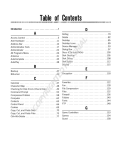

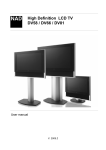
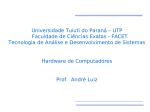
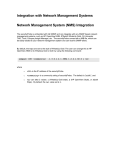

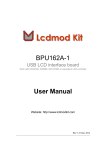

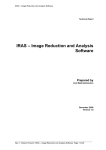


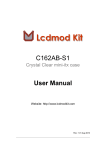

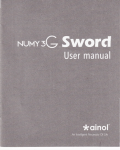
![2008 [DAMN SMALL NAS]](http://vs1.manualzilla.com/store/data/005757702_2-ad0d2f1082977ee9ed587e807bbc0127-150x150.png)
